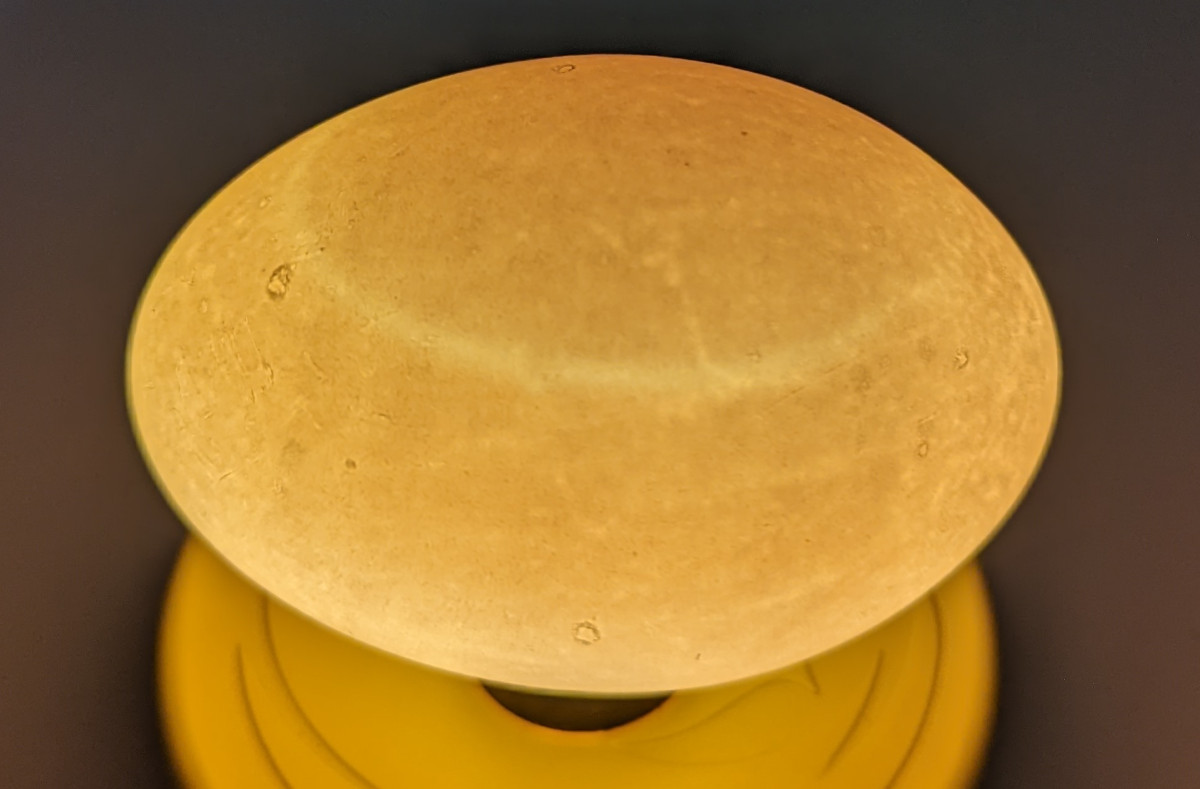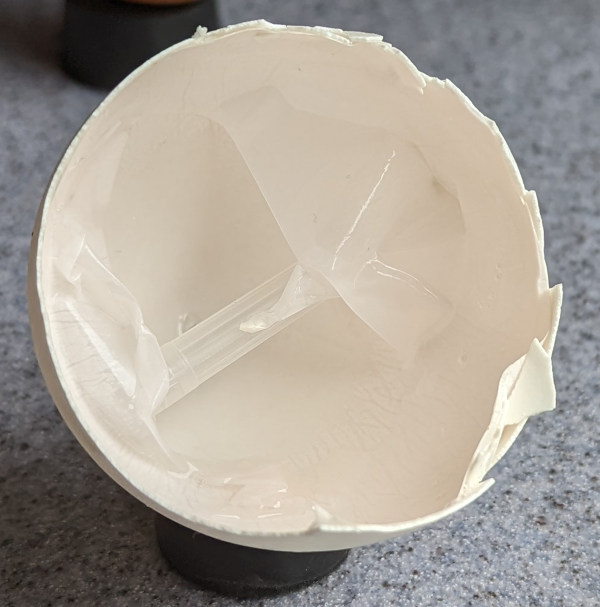Detached, saddled or tremulous air cells and what to do about them.

All eggs from birds have an air cell in the blunt end. This air cell grows in size during incubation and is essential for the chick in late stages to provide breathable air to fill the lungs and more space to manoeuvre before hatching.
Below: An egg with a detached air cell.
Video transcript: So this is an egg with a detached air cell and you can see quite clearly that there is a bubble at the surface. What has happened here is the internal membrane had been damaged in transit and has ruptured and the air cell is now free to move around inside the shell. Even if these eggs are fertile they will likely never hatch as the chick inside won't be able to pip internally.
Detached air cells can happen if the internal membrane between the egg white and the air space has burst or if the membranes have separated from each other.
In the first case the air cells has mixed with the egg contents and in the second the air cell is free to move anywhere in between the two membranes.
Why is there an air cell or gap in eggs?
The air cells form in eggs because the embryo needs air to fill its lungs after it has pipped internally,oxygen to survive and the extra space to move into position before hatching.
What does detached air cell mean?
Detached air cells were sometimes known colloquially as "free wheelers" because of the way the air cells moved around as the egg was rotated.
Below: This is the damaged air cell from the egg in the video shown from inside the egg. You can see it has split completely.

Detached air cells can happen when:
- The membranes are not properly formed.
- The eggs are knocked or handled roughly.
- Hatching eggs are shipped by aircraft and the pressure change bursts the air cell.
- The parents have an infection or genetic issue.
Sometimes the air cells moves freely around between the membranes and with other the membranes are broken and the air mixes with the egg contents.
How much does a detached air cell effect hatch-ability in incubated eggs?
Detached and malformed air cells have a huge effect on on the chicks ability to hatch.
Eggs with detached air cells can hatch. Between 25% and 36% of eggs with detached air cells will go on hatch without assistance.
An experiment by CHARLES W. KNOX, AND MARLOW W. OLSEN at the national Agricultural research centre in 1935 found that hatch-ability in eggs with detached or tremulous air cells was as low as 36%.
This tallies very well with our own recent experiment when only 1 in 4 eggs with a detached cell went on to hatch normally.
What can you do about detached air cells?
There is almost nothing you can do with an egg that has a detached air cell, if it is fresh enough, it can be safely eaten.
Air cells never heal, once the damage is done it cannot be undone. The practise of letting hatching eggs sit for a day to allow the air cells to heal is a nonsense that just delays the start on incubation by a day.
You should avoid trying to hatch eggs with damaged air cells unless you have to.
How to prevent detached air cells:
Eggs cells are damaged by sudden shock forces, either in transit or by rough handling. Poorly nourished parent stock or chickens with genetic abnormalities can produce eggs with weak membranes.
Prevent damaged or detached air cells by:
- Handling eggs carefully,
- Getting your hatching eggs locally,
- Use only reputable sellers,
- Feed your breeding stock a quality feed ration,
- Don't breed from birds that hatch from eggs with air cell problems.
You can touch hatching eggs before and during incubation but you must handle them carefully.
Saddled air cells:
Saddled air cells are malformed and have a shape like the saddle of a horse.
Saddled air cells are not normally too much of a problem but you should remove those chicks that hatch from saddled eggs from your breeding program. It is not the sort of genetic issue you want to continue down the line.
Below: A saddled air cell.

The membranes have not formed perfectly when the egg was produced.
Tips for incubating eggs with saddled or detached air cells eggs:
These simple tips will help if you have to hatch egg with displaced air cells:
- Incubate the eggs with pointy side down rather than on their side to allow air sack to remain at the fat end of the egg.
- Incubate at a slightly lower humidity than you normally would, around 30% as eggs with detached air sacks are not as likely to grow like they should.
- Candle early to check for development continuing to keep the egg fat side up.
- Start lock-down as normal but keep the fat end of the egg raised up slightly.
